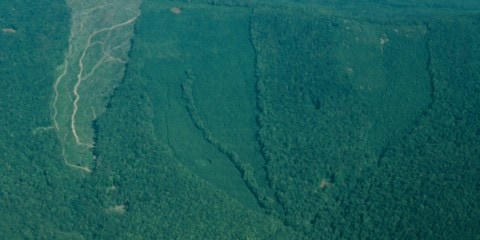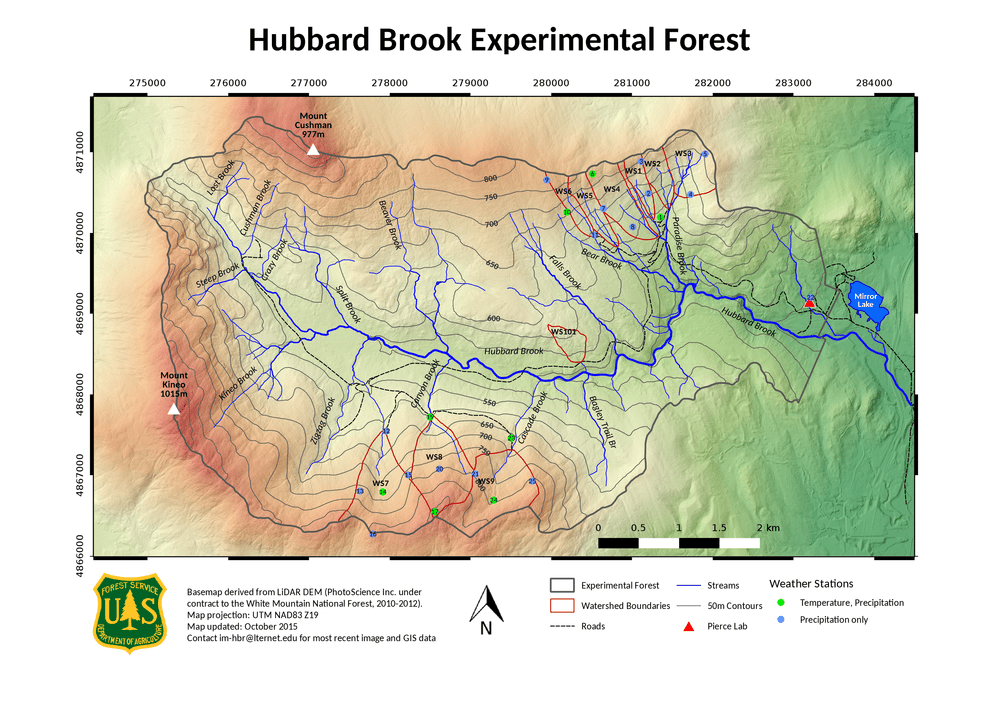 The Hubbard Brook Experimental Forest (HBEF) is home to one of the world’s most influential long-term ecological study sites. Located within the White Mountain National Forest in central New Hampshire, this 7,800-acre forested site was established by the USDA Forest Service in 1955 as a center for hydrologic research in New England. Abundant small watersheds serve as a natural laboratory for research on water yield and quality in response to natural and human disturbances.
The Hubbard Brook Experimental Forest (HBEF) is home to one of the world’s most influential long-term ecological study sites. Located within the White Mountain National Forest in central New Hampshire, this 7,800-acre forested site was established by the USDA Forest Service in 1955 as a center for hydrologic research in New England. Abundant small watersheds serve as a natural laboratory for research on water yield and quality in response to natural and human disturbances.
Scientists at Hubbard Brook pioneered the “small watershed approach” in ecological research—they conduct experiments on an entire watershed and monitor the resulting changes in streamflow, nutrient cycling, soil processes and forest growth. This approach has been emulated by ecologists around the world. The watersheds are equipped with a network of precipitation and stream gaging stations and weather instruments and soil and vegetation monitoring sites that provide the framework for hydrologic and ecological research.
There are nine gaged watersheds at the Hubbard Brook Experimental Forest, four of which have been treated experimentally. Research at Hubbard Brook is also built on a foundation of long-term environmental monitoring, which led to the discovery of acid rain in the 1960s. Today, the forest and its watersheds serve as a living laboratory where students, educators, technicians, scientists, and more than 70 principal investigators from universities and research institutions across the country explore how the ecosystem responds to both natural and human disturbances.
Major Research Accomplishments of the HBEF include:
Small watershed approach pioneered for study of forest water and nutrient transport.
Effects of forest harvesting disturbance on water quality and quantity.
Long-term effects of acid rain on soil nutrient pools and stream water chemistry.
Documented changes in climate and importance of winter biogeochemistry.
Relationship of interior bird populations to forest structure and development.
Development and application of ecosystem process models.
For more information, visit the Hubbard Brook website.

